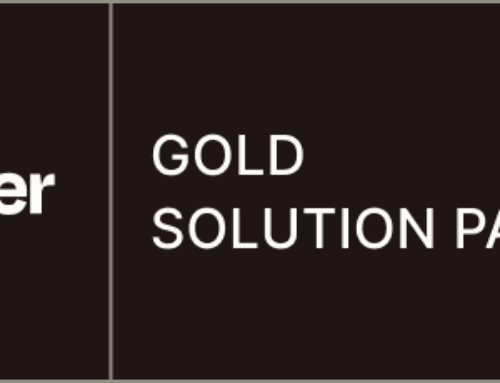Automating Email Organization in Gmail: A Simple Guide
Introduction to Email Automation
In the modern digital age, our inboxes are often flooded with messages every day. From work-related emails to newsletters and personal communications, it can quickly become overwhelming. Consequently, staying organized is essential. But who wants to spend hours each week sorting through emails? This is where email automation comes in handy.
Email automation allows you to streamline your workflow by automatically managing incoming messages. Think of it as having a personal secretary who sorts out your mail and puts everything in the right place before you even have to look at it. It’s not just about convenience; it’s about efficiency and productivity. Stick around as we dive into how you can set this up using Google’s email service, Gmail.
Why Automate Your Gmail Inbox?
Ever find yourself wasting precious time sifting through piles of unread emails? It’s not just tedious—it can be downright counterproductive. By automating your Gmail inbox, you can focus on what really matters without getting bogged down by clutter. Automation takes away the hassle of manually organizing emails, letting you concentrate on more pressing tasks.
Moreover, an organized inbox means you won’t miss important emails buried under a mountain of less significant ones. You’ll save time searching for that one critical message because it’ll already be in its designated folder. Imagine it as having a neatly arranged library where every book is in its rightful place, ready for you whenever you need it.
Getting Started with Gmail Automation
The first step towards achieving this is setting up your Gmail account for automation. Don’t worry; you don’t need to be a tech wizard to do so. All you need is a little guidance and a few tools that Google provides. Before diving into the specifics, make sure your Gmail is up to date; the latest features often come with updates.
Once you’re ready, the primary tool you’ll use is Gmail’s native filtering and labeling system. These features allow you to create rules that tell Gmail what to do with specific types of emails as soon as they arrive. It’s similar to setting up dominoes—once triggered, each email follows a predetermined path, landing exactly where it needs to be.
Understanding Filters and Labels in Gmail
Filters and labels are the heart and soul of Gmail automation. Filters act like security personnel, scanning every incoming email and deciding whether it meets the criteria you’ve established. If it does, an action is triggered, such as moving the email to a specific folder or applying a label.
Labels, on the other hand, are akin to sticky notes. They mark emails with various tags so you can easily identify what they are without opening them. Whether it’s categorizing emails by project, sender, or priority level, labels keep everything in check. The magic happens when labels and filters work together harmoniously, creating an inbox that practically organizes itself.
Setting Up Your First Filter
Ready to take the plunge? Begin by logging into your Gmail account and heading to the settings. Once there, look for the “Filters and Blocked Addresses” tab. Click “Create a new filter,” and you’ll enter a world of customization options. You can filter emails based on sender, subject, keywords, or even if they contain certain attachments.
After configuring your criteria, decide what happens next. You can choose to archive it, mark it as read, star it, apply a label, forward it, delete it, or a combination of these. Once you’ve set everything up, hit “Create filter,” and voila! Your first filter is active, silently working behind the scenes to keep your inbox tidy.
Advanced Automation Techniques
If you’re feeling adventurous, advanced automation techniques can further refine your email management skills. Consider using third-party tools like Make (formerly Integromat) to enhance Gmail’s capabilities. These tools allow for even more intricate workflows, integrating Gmail with other apps to perform complex tasks.
For example, you can set up a scenario where all emails from a specific client get forwarded to your team, backed up to Google Drive, and logged into a CRM—all automatically. Using such tools is like hiring a digital team member who’s always on call, ready to execute commands with flawless efficiency.
Troubleshooting Common Issues
Occasionally, you might run into hiccups while setting up automation. Perhaps a filter doesn’t perform as expected, or a label is misplaced. Fear not, these issues are usually minor and easily rectifiable. Start by revisiting your filter criteria to ensure nothing has been overlooked.
Additionally, it’s important to remember that certain filters might conflict with existing settings. When in doubt, disable conflicting filters temporarily and test them one by one. Think of troubleshooting as performing a health check on your car—it’s all about finding the small tweaks that keep everything running smoothly.
Conclusion: Embrace a More Organized Inbox
By embracing email automation, you’re not just decluttering your inbox—you’re reclaiming your time and mental bandwidth. The process may seem daunting initially, but once you see those sorted emails flowing effortlessly into their designated spots, you’ll wonder why you didn’t start sooner.
Remember, the key is consistency and continuous refinement of your filters and labels. As your needs evolve, so too should your automation setup. Keep experimenting with different configurations until you find the perfect balance that works for you. Happy automating!
FAQs
1. Can I automate only incoming emails, or is it possible to set up rules for outgoing mail as well?
While Gmail primarily focuses on incoming mail, you can use filters and labels creatively to manage outgoing emails. For example, you can automatically label outgoing mails if they meet certain criteria, making future retrieval easier.
2. Will setting up too many filters slow down my Gmail?
No, setting up filters does not impact Gmail’s performance. However, having numerous filters may make management a bit challenging, so periodically reviewing and cleaning up unnecessary filters is a good practice.
3. Are there any privacy concerns with using third-party integration tools like Make?
Privacy concerns are valid, so it’s crucial to use trusted third-party tools that comply with data protection regulations. Always review their privacy policies and user agreements before granting access to your Gmail account.
4. Can I set up automation on the Gmail mobile app?
Currently, Gmail’s mobile app doesn’t support setting up filters directly. You will need to access Gmail through a web browser on a desktop to configure automation settings.
5. What if I want to temporarily disable a filter without deleting it?
You can edit the filter and deselect all actions, essentially pausing its functionality. This way, you can reactivate it later without having to recreate it from scratch.









